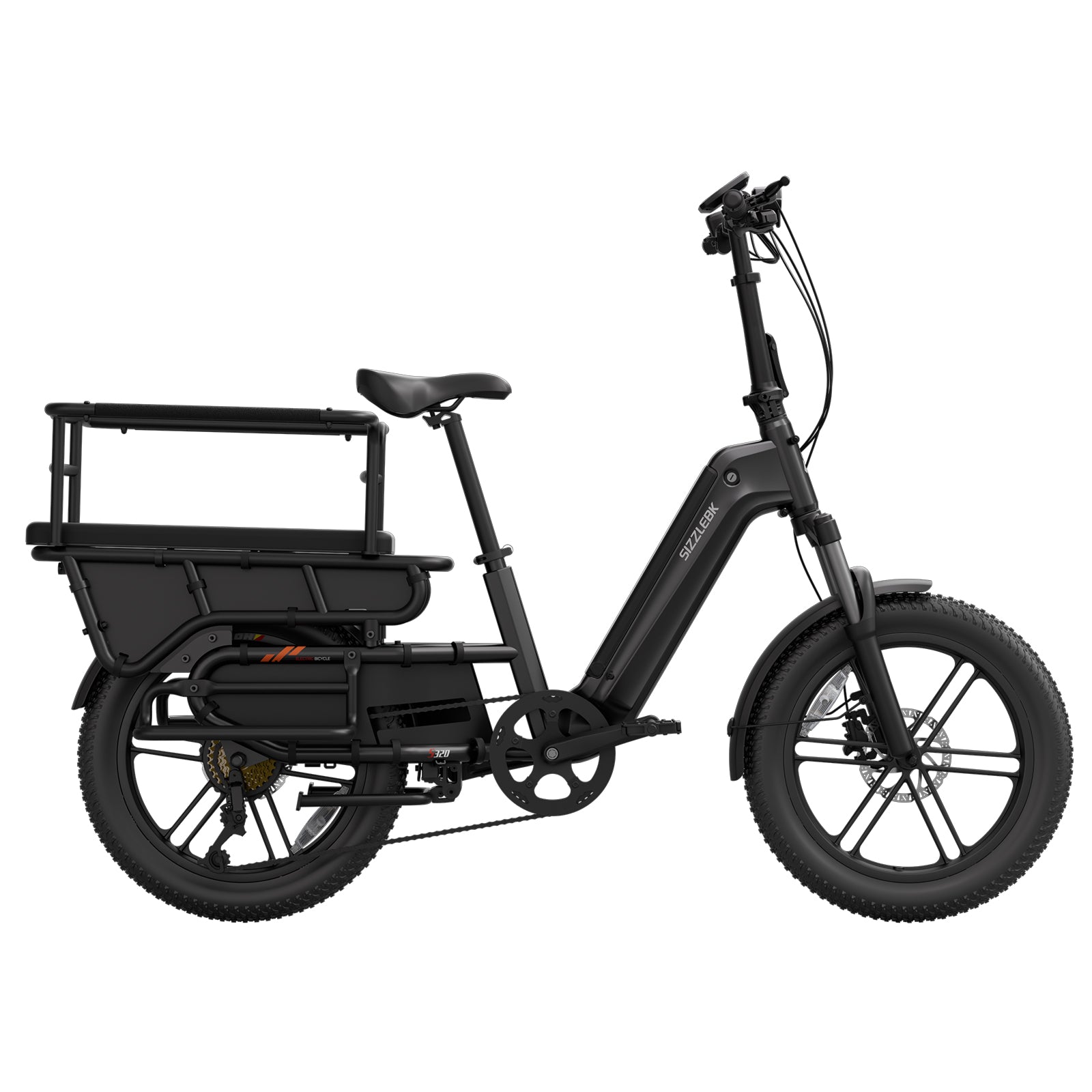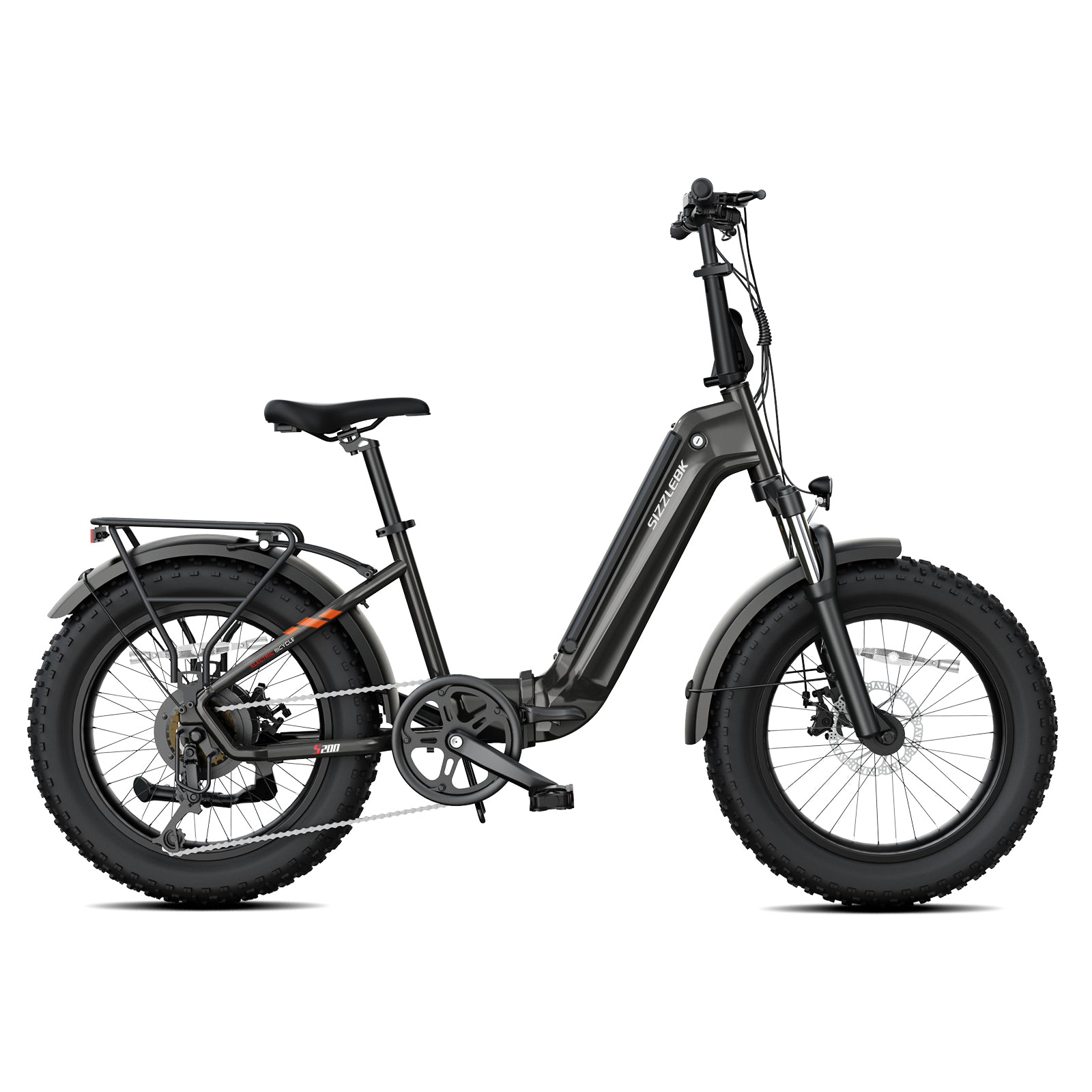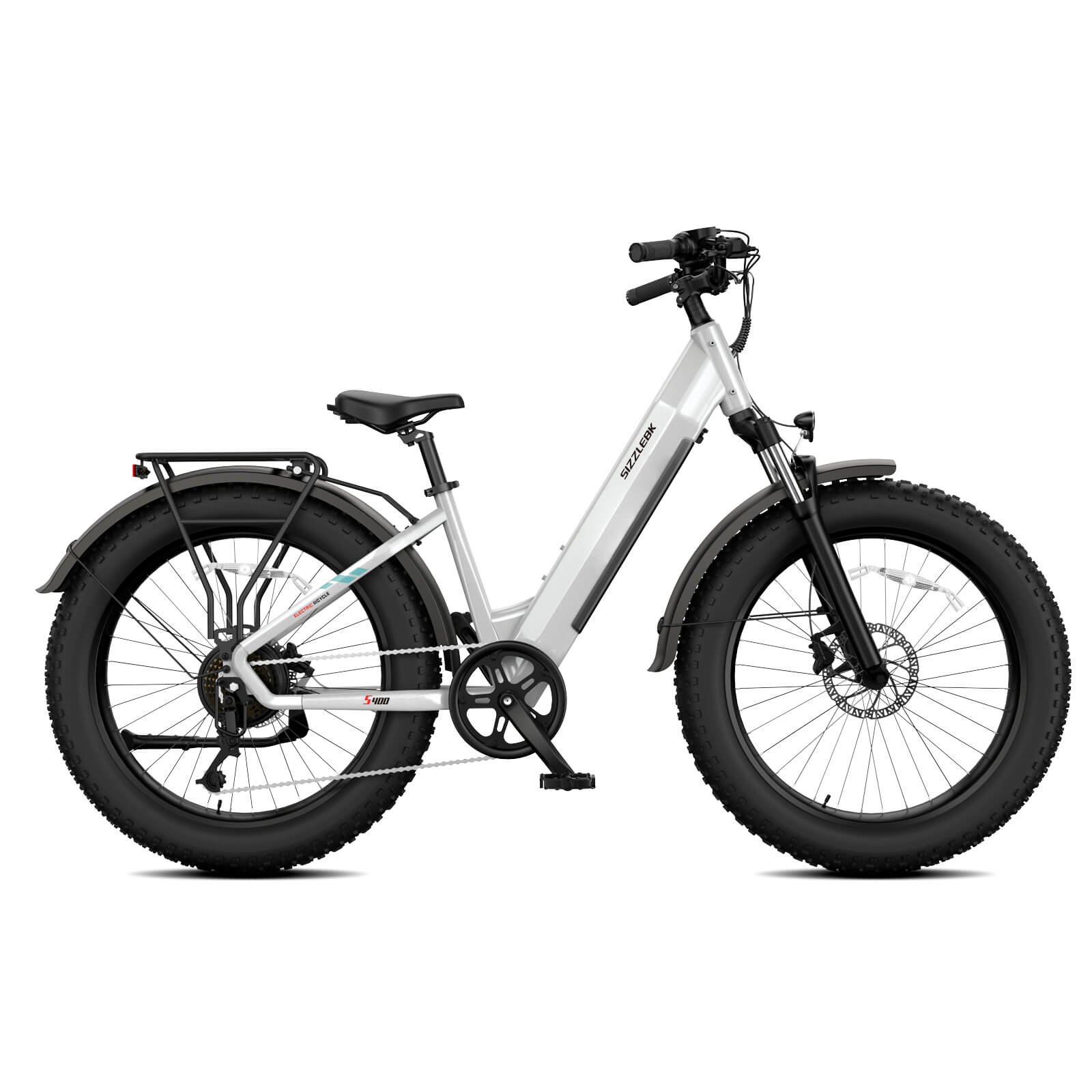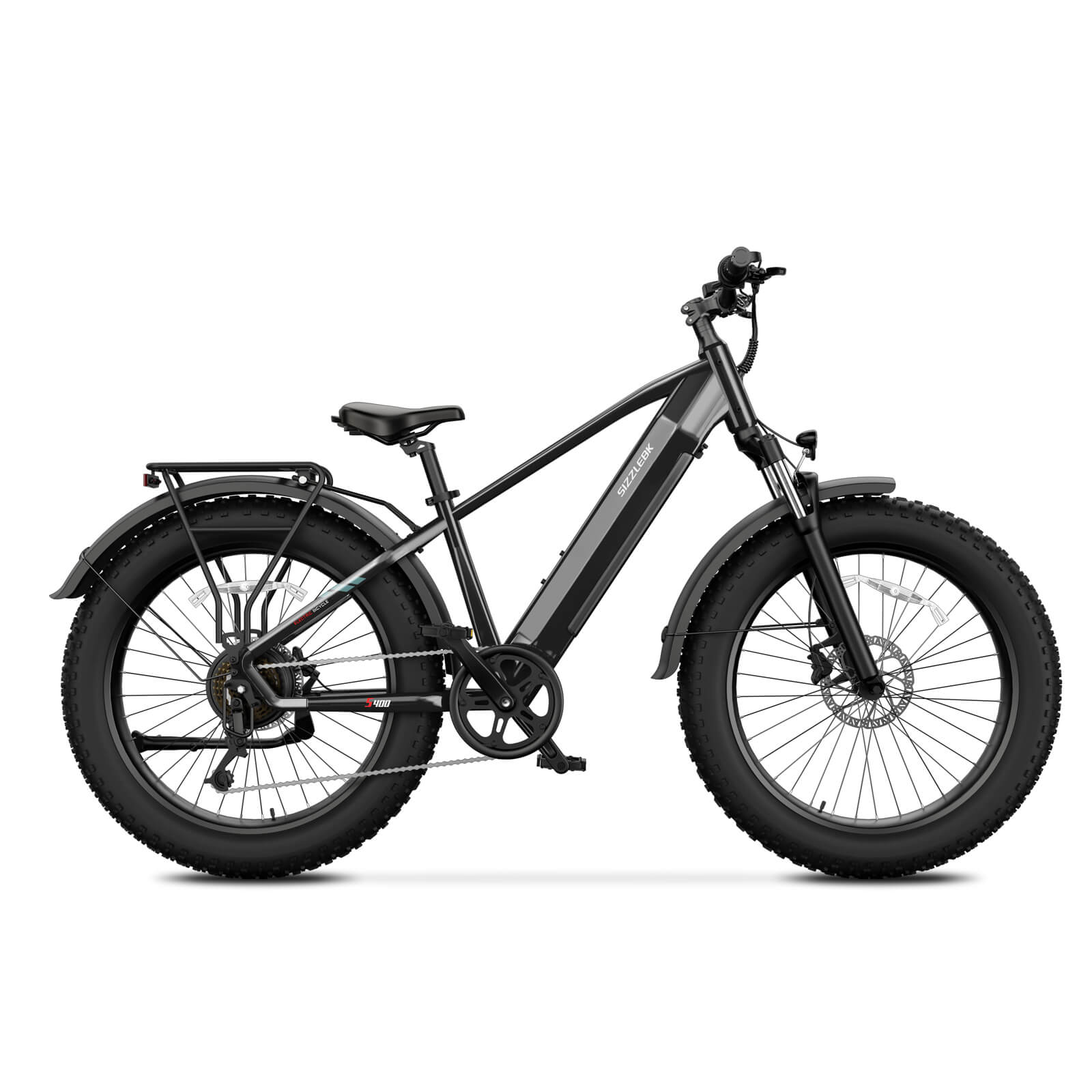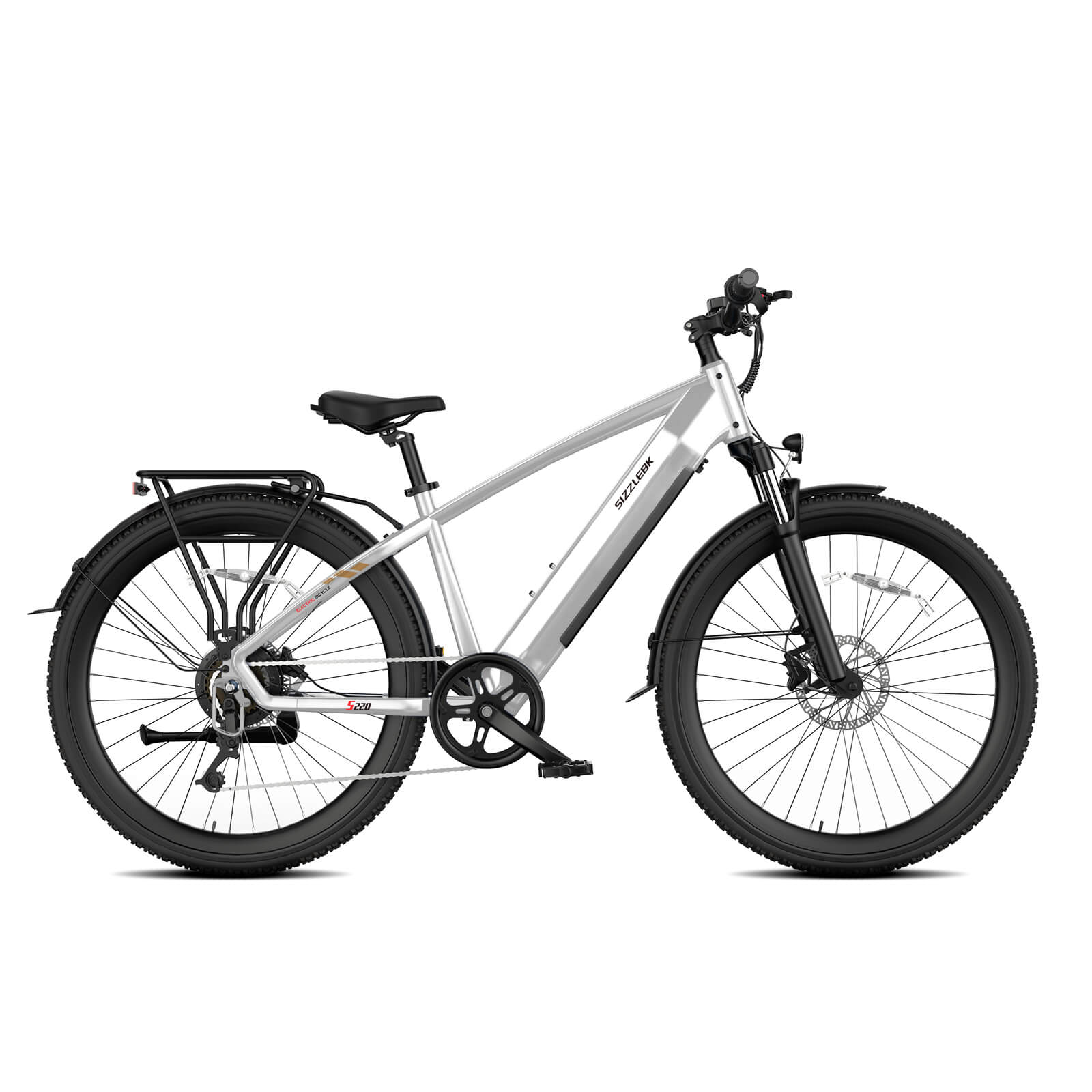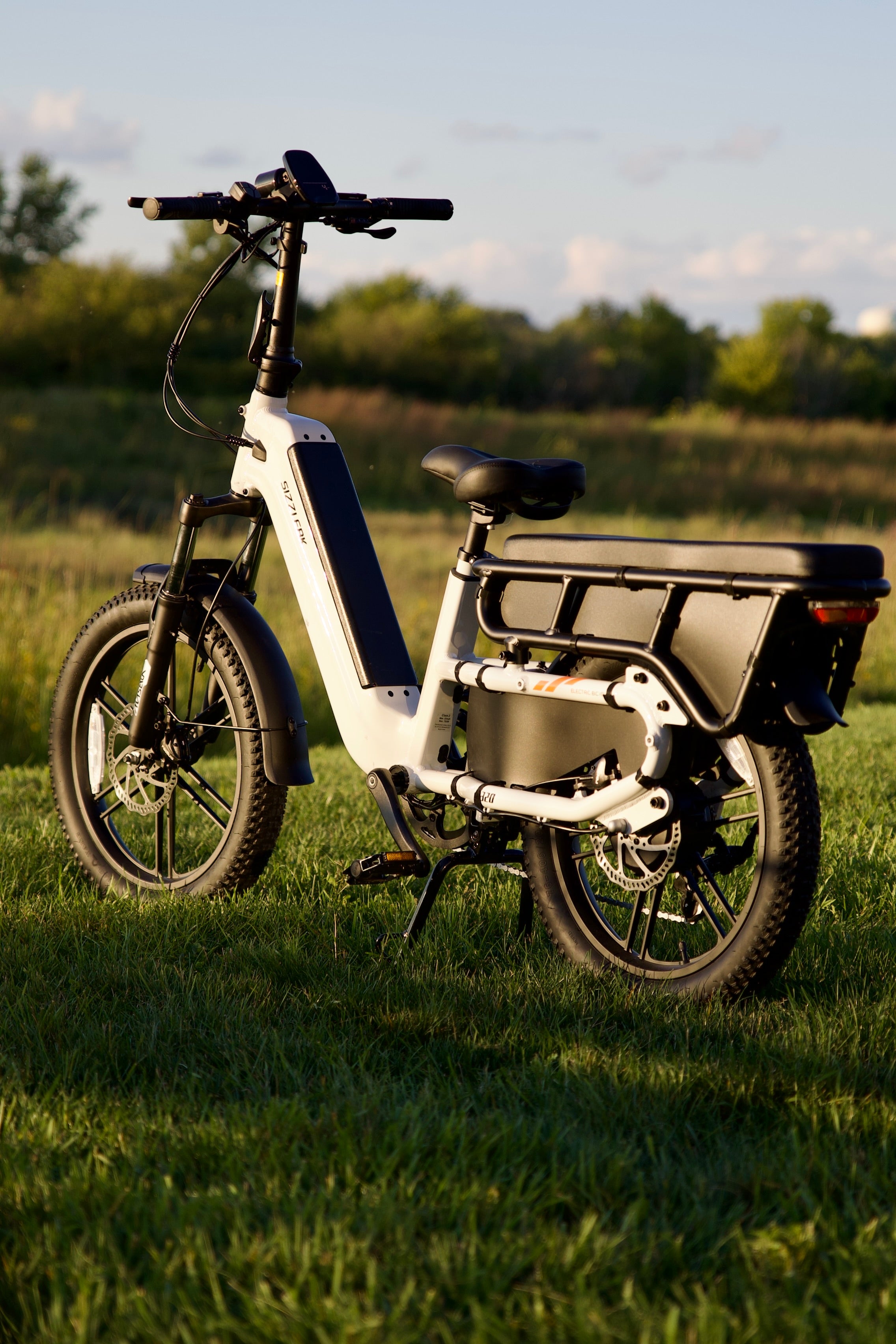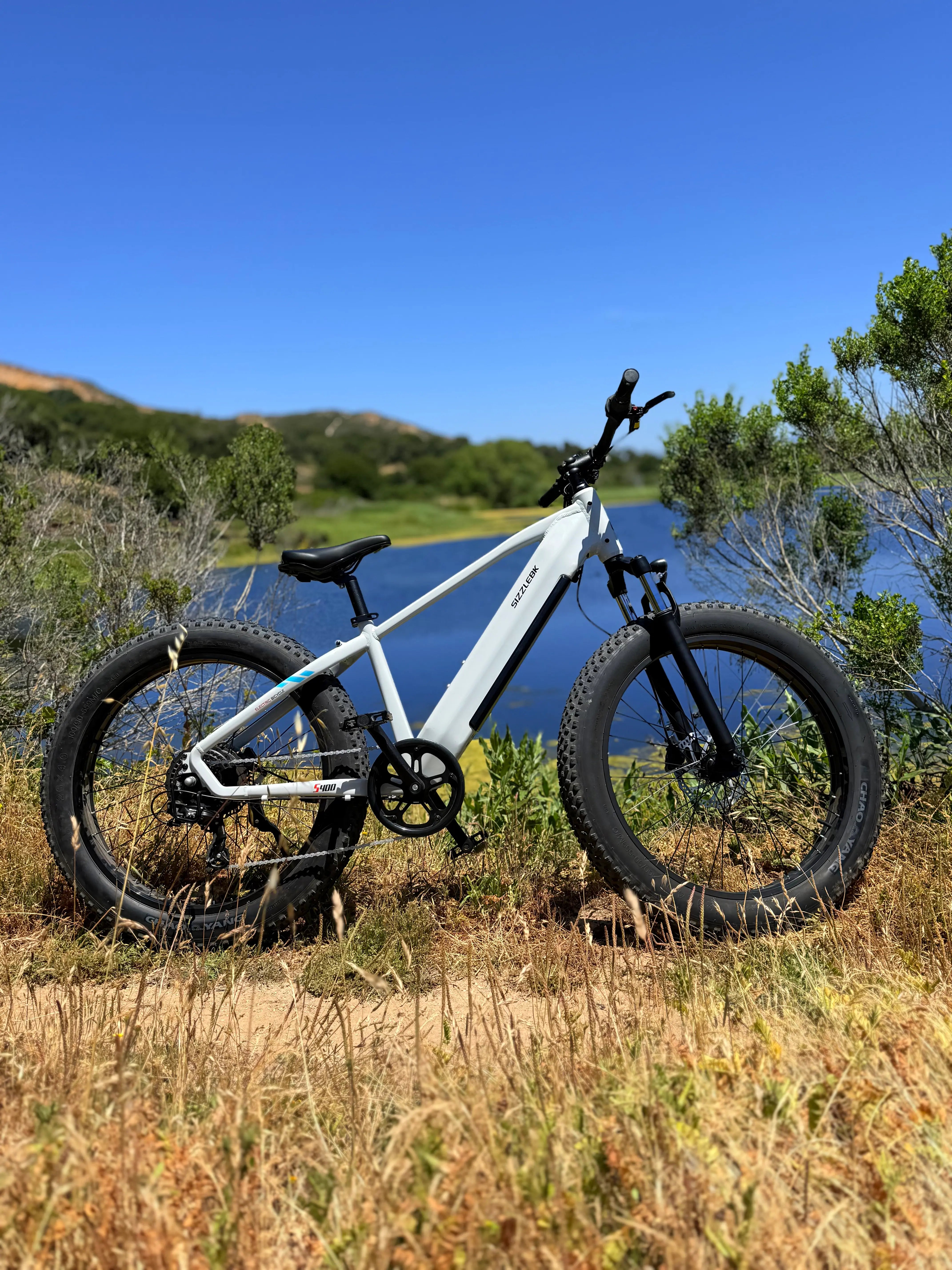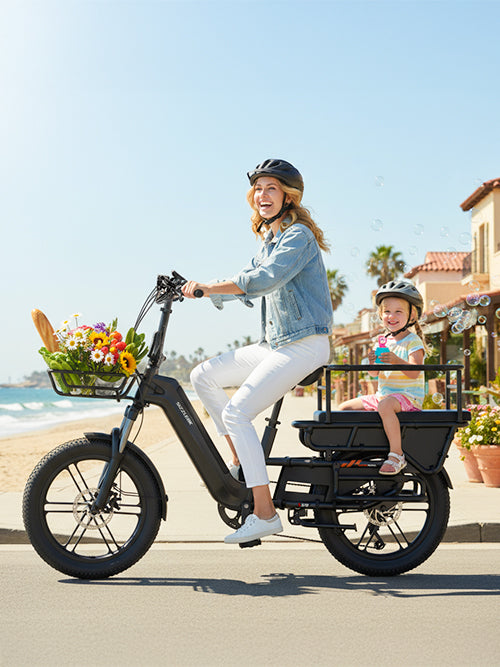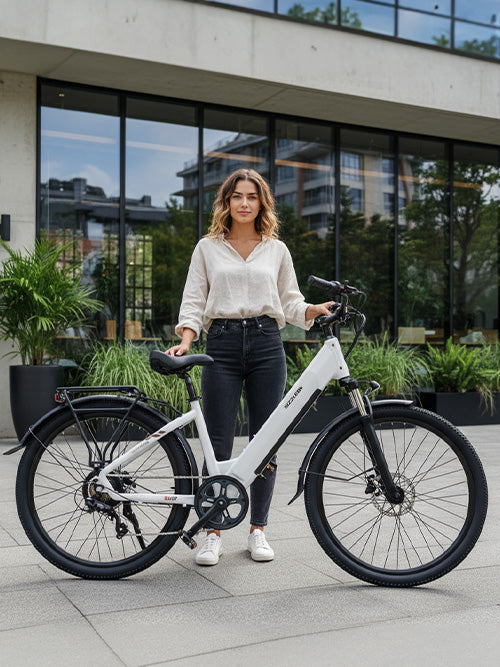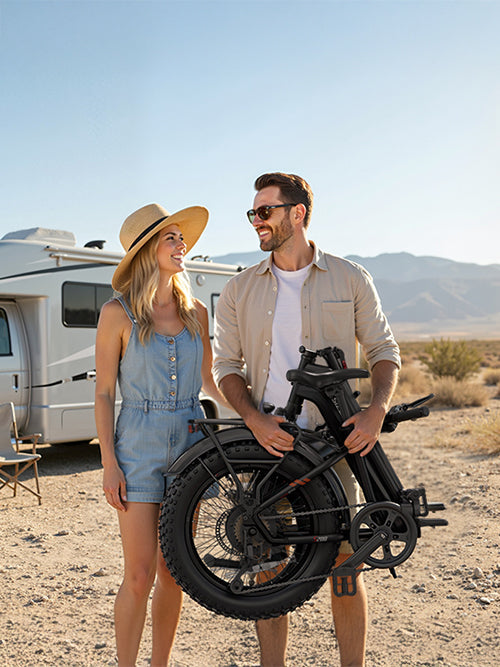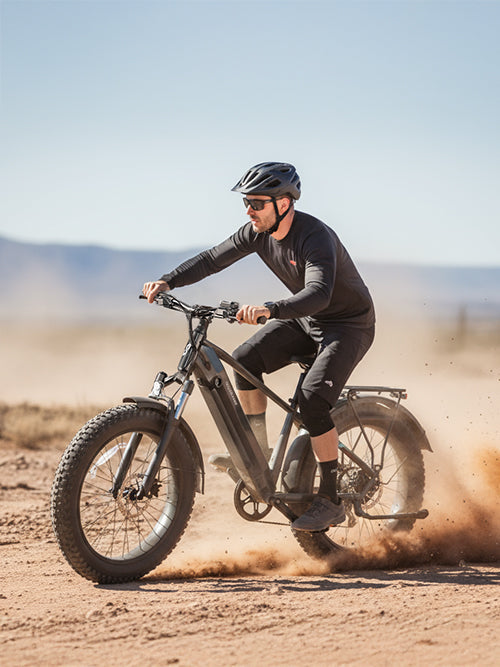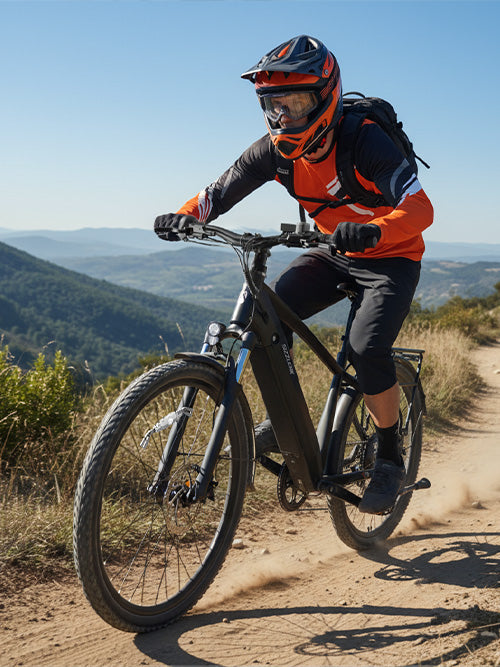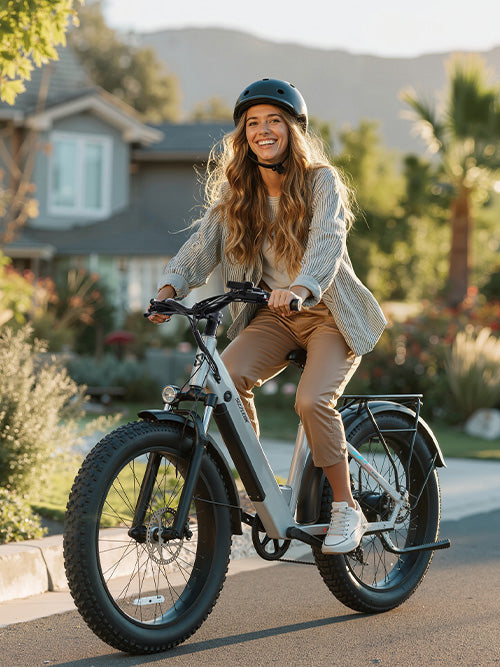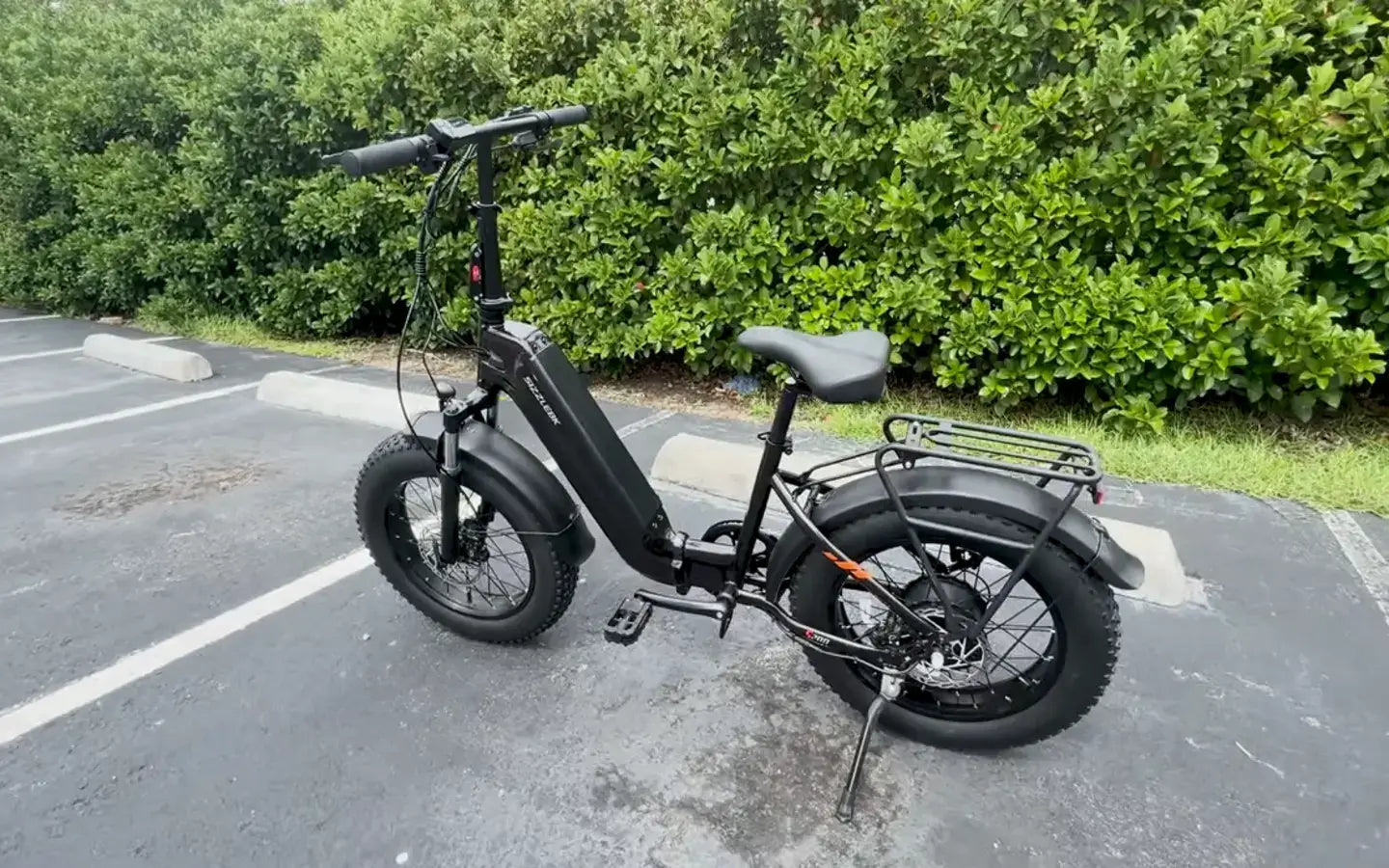Winter changes the environment into a beautiful winter wonderland, but icy roads and snow limits most cyclists. Electric fat bikes offer outdoor adventure all year long. However, not all e-bikes can resist the harsh winter elements. Picking the wrong option can lead to a frustrating ride, impact safety, or a dangerous breakdown in can leave you stranded.
This winter electric bike buying guide will help you find the answer. We’ll walk you through three common mistakes to avoid, explain the must-have specs for snow riding, and introduce a rugged winter-ready e-bike built to perform in sub-zero conditions—without risky modifications.
Why Winter-Specific E-Bikes Matter
A lot of people think that they can just take any e-bike, assuming with some adaptations, it will handle just fine in the cold. However, winter riding brings its own set of challenges, from battery depletion in sub-zero temperatures, to losing traction on roads that are icy. If your bike was not intended for winter riding, you'll end up with poor riding performance, possibly damaged parts, and danger to yourself (and possibly others)!
That is why I chose to create this guide focusing on what really matters: durability, power, traction and safety. Let's get started.
Mistake 1: Ignoring Must-Have Specs for Winter Riding
What Makes an E-Bike Winter-Ready?
When temperatures drop and snow piles up, your e-bike needs to meet three essential criteria:
4-inch fat tires for snow traction
750W motor for pushing through ice and slush
Temperature-controlled battery system for consistent power delivery
1. Wide, 4-Inch Fat Tires for Stability
Snow, slush, and ice create low-traction conditions a narrow tire simply can’t traverse. 4-inch wide tires distributes the weight of your bike across a significantly larger trading surface—because of that, traction will be greatly increased, stability will be increased and you make it much less likely to sink or run the risk of sliding out, like when snowshoeing.
When looking for your new tires, look for puncture-resistant (especially important for on-road use) deep tread patterns that will channel snow and maintain grip on icy surfaces. It will also matter what air pressure you are running—decreasing PSI in deeper snow, once again increases contact and degree of control.
2. 750W Motor for Torque and Momentum
In summer, a 500W motor might be enough. However, in the winter, you will contend with snowpack, hills, and strong winds.The 750W motor can deliver extra torque when you need to maintain control in tough conditions.
It's not just about speed, it's about having the capacity to safely accelerate without stalling, and climb snowy inclines without wearing down your motor. And remember to check that the bike has a quality controller and drivetrain to work with the motor.
3. Cold-Weather Battery Protection
Low temperatures can cause lithium-ion batteries to underperform or even shut down. Look for e-bikes with:
Built-in temperature sensors or battery insulation
UL-certified battery systems for safety
Removable batteries to bring indoors between rides
Cold weather can reduce range by 20–50% if your battery isn’t protected. That’s a serious concern for long commutes or trail rides where you can’t afford a mid-ride power loss.

Mistake 2: Modifying a Standard E-Bike Instead of Buying Winter-Ready
Why DIY Winter Conversions Often Fail
It’s tempting to buy a cheaper standard e-bike and “winterize” it yourself. Maybe you’ll add fenders, swap tires, or insulate the battery. But winter conversions come with risks:
Warranty voids from third-party modifications
Improper wiring or sealing leading to water damage
Unbalanced handling from aftermarket accessories
Not to mention the hours spent researching, buying, and installing these parts—without any factory-level integration or safety testing.
The Real Cost of Modifying
Let’s say you buy a $1,200 e-bike and then spend:
$250 on fat tire conversion
$120 on a battery insulation kit
$100 on winter lights and reflectors
$80 on added drivetrain protection
That’s already $500+ in upgrades—without factory integration, and possibly with zero warranty coverage.In contrast, models such as the Sizzlebk S400 are easy to assemble right out of the box and fully optimized for winter weather and rugged terrain.
Mistake 3: Overlooking All-Terrain Packages Like the S400
Sizzlebk S400 is here: Built for tough terrain and winter roads
If you are looking for a worry-free, safe, reliable and fully functional winter electric bike, the Sizzlebk S400 Step Over Fat Tire Snow and Beach Electric Bike will meet all your winter riding needs. It is designed for the rider who needs dependability and performance on snowy trails, icy roads, and slushy commuting.
Winter-Optimized Features:
4” puncture-resistant fat tires with deep tread
750W high-torque motor with 85Nm output
48V 15Ah temperature-stable battery, UL certified
Hydraulic brakes for superior stopping power
With an IPX6 waterproof rating, it’s perfect for snow, sleet, and freezing rain
Front suspension fork for comfort on frozen terrain
The S400 combines all-terrain and cold-weather durability without the need for aftermarket changes. For riders in northern climates, the S400 is the reliable daily commuter or weekend adventure go-to.

Real-World Tested: From -25°C in Alaska to Snow Trails in Vermont
The S400 has already earned praise from winter commuters and snow adventure riders alike. From Alaskan riders facing -25°C mornings to Vermont bikers pushing through icy trails, the S400 has proven its winter capability across North America.
“I used to struggle with traction and battery performance in winter. Since switching to the S400, I’ve ridden comfortably through heavy snow with no issues at all.”
– Verified Buyer, Michigan
This kind of plug-and-play confidence is what makes winter e-bike riding enjoyable—not just tolerable.
Additional Tips: Gear Up for Snow Safety
Even with a winter-ready e-bike, proper gear can make all the difference. Here are some winter cycling essentials to keep you safe and comfortable:
Thermal helmet liners and waterproof gloves
Layered, moisture-wicking clothing
Reflective vests and lights
Tire pressure gauge for adjusting grip on the go
Also, remember to wipe down your bike after each snowy ride to remove salt and moisture, store it in a dry space, and charge your battery indoors.

Final Thoughts: Ride Smart, Ride Safe This Winter
Winter cycling can be an empowering and eco-friendly alternative to driving—but only if your e-bike is truly ready for the season. Avoid the mistake of relying on a standard model and hoping it performs in snow.
Choose a bike built for cold weather from the frame up—with fat tires, a powerful motor, and a temperature-stable battery system. The Sizzlebk S400 is engineered for just that: smooth riding in harsh winter conditions, all without the hassle of retrofitting or DIY upgrades.
Ride with confidence. Ride with control. Ride winter-ready.
Ready to Conquer the Cold?
Explore the Sizzlebk S400 All-Terrain E-Bike Today
Bonus: Order now and receive a free rear rack and fender kit—limited time only!
